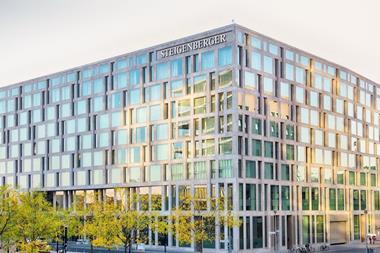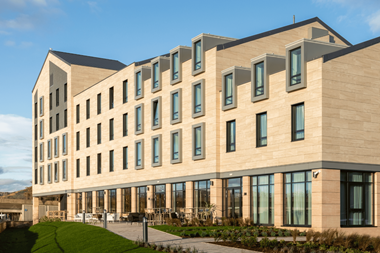Healthcare property, student housing and hotels, until recently regarded as niche sectors in Germany, are gaining ground as capital-rich investors desperately look for opportunities in a crowded market, delegates heard at PropertyEU’s Germany Investment Briefing held in London this week.
Healthcare property, student housing and hotels, until recently regarded as niche sectors in Germany, are gaining ground as capital-rich investors desperately look for opportunities in a crowded market, delegates heard at PropertyEU’s Germany Investment Briefing held in London this week.
‘Student housing in particular offers good returns and a good risk profile,’ said Felix Bauer, CEO of investment manager Deutsche Real Estate Funds Advisor (DREF). ‘It is part of the residential asset class, but renting to students offers an extra 100-150 basis points. Where residential offers yields of 3%, good student housing offers 4.5% or 5%, in Munich even 6%.’ Germany has over 100 university cities and demand for accommodation is high across the board.
The challenge in the student housing sector is that it is a very fragmented market place, which is tricky to access for big investors and more likely to attract small to medium-sized investors, the briefing heard. ‘Mid-sized pension schemes, which have always invested in government bonds, are now looking for other investment opportunities,’ said Rainer Nonnengasser, CEO of MPC Munchmeyer Petersen Capital. ‘They love residential and they are now happy to look at student housing.’
Micro-living
Another emerging sector is ‘micro-living’, a peculiarly German phenomenon: small, self-contained flats near city centres or other strategic locations, especially designed for single professionals.
As in the case of student housing, the micro-living sector is characterised by low supply and high demand. Twenty-five years ago, single households accounted for 24% of the total, a percentage which has since risen to 50%, Nonnengasser pointed out. ‘Yet in all that time the offer of small, one or two-room apartments has not changed. It remains stuck around the 2-4% mark.’
‘Students and young professionals struggle with such a limited offer, they cannot find the accommodation they need,’ he said. ‘We offer fully furnished 200 or 300-unit schemes, affordable good design, an average size of 20 m2, which is exactly what young people are looking for. It is also an opportunity for investors to broaden their portfolio, as occupancy periods are long, an average of 25 years, so there is a strong managerial aspect.’
Demand is such that when building or finding residential buildings is difficult, ‘we convert office buildings, as long as they are in attractive spots in the city’, he said.
For both micro-living and student housing location is key, but in this respect Germany offers another advantage: a multiplicity of choice. Thanks to its decentralised structure, the country has a multitude of good places to invest in, Bauer said. ‘Beyond the seven top-tier cities like Berlin, Munich or Hamburg there are 20 to 30 good manufacturing or university centres, a great choice of locations.’
‘A lot of commercial developers are now looking at residential because the returns are better,’ said Philip La Pierre, head of investment management Europe at Union Investment Real Estate. ‘ There is a lot of focus on residential, but I do not think it will turn into oversupply because the demand is and will be there.’










